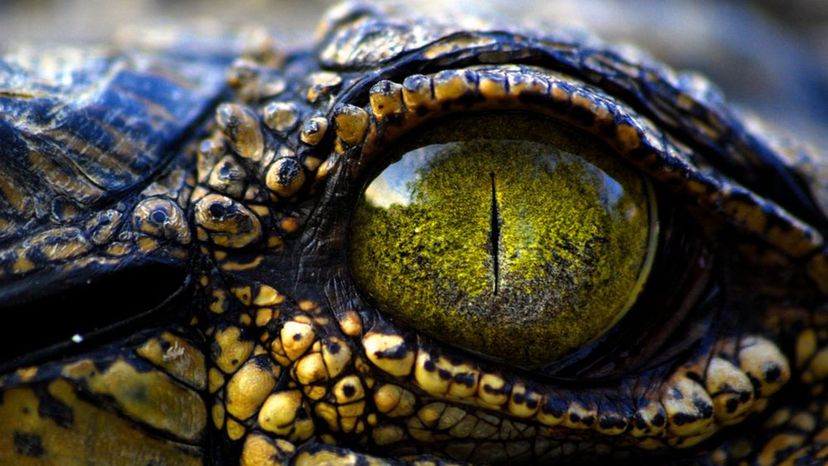
Image: Shutterstock
About This Quiz
These creatures might make you jump, scream, or send a cold chill down your back. Whether they, buzz, slither or bite, people tend to get the heebie-jeebies when these creatures come around. See how many you can name from an image!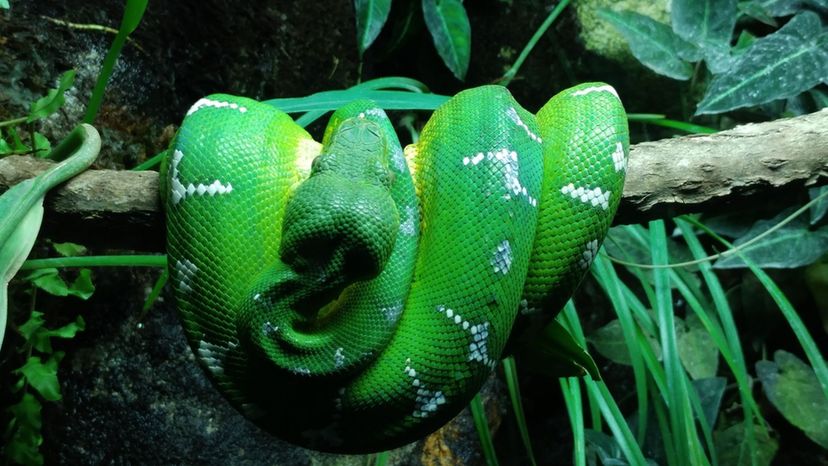
shutterstock
Which reptile is shown in this image?
Fea's Viper
Emerald Tree Boa
This beautiful green boa can be found in South America. Although its distinctive color gives it great attention among enthusiasts, it is actually red when it first hatches.
Osage Copperhead
Box Turtle
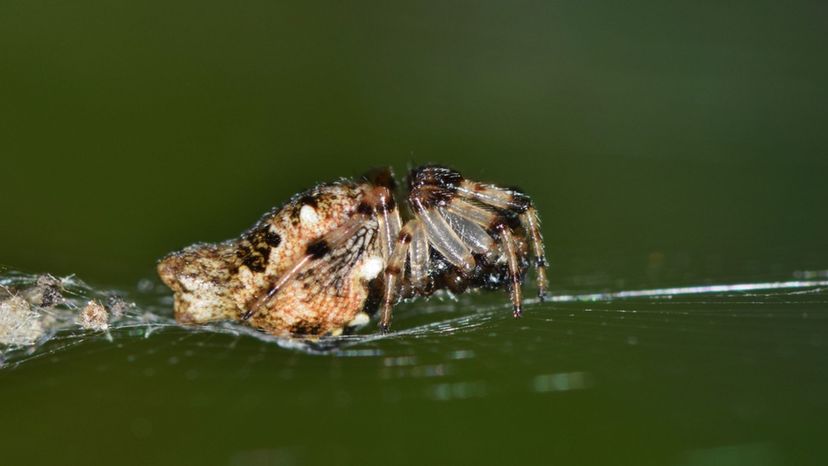
Shutterstock
Which spider is shown in this image?
Eastern Harvestman
Trashline Orb Weaver
In general, the Trashline Orb Weaver is a very small spider. The female is larger than the male (as is the case with most spider species) with a body length of about 7.5 millimeters. These spiders recycle waste material, adding it as camouflage to their webs.
Stealthy Ground Spider
Green Crab Spider
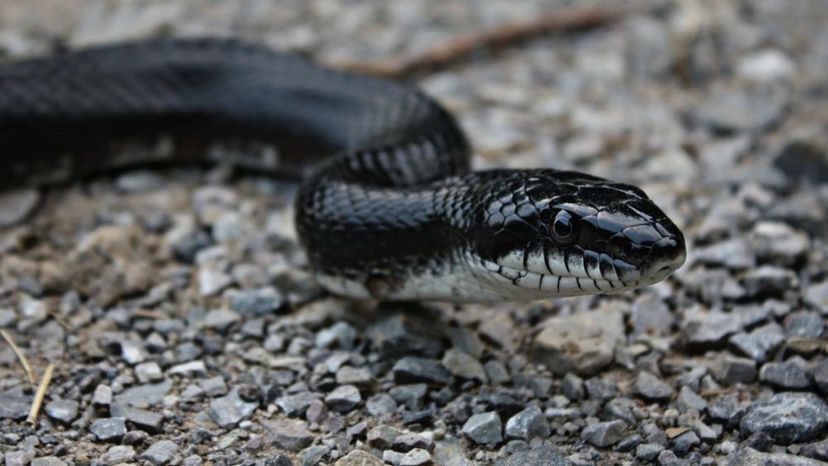
shutterstock
Which reptile is shown in this image?
Brazilian Rainbow Boa
Black Rat Snake
The black rat snake is able to easily move horizontally on the ground and vertically in trees. However, it is relatively harmless and will avoid confrontation.
Osage Copperhead
Yangtze Mamushi
Advertisement
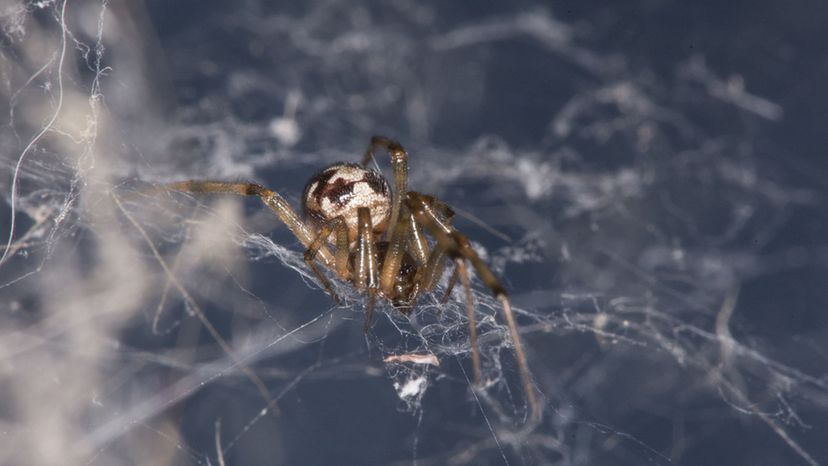
Shutterstock
Which spider is shown in this image?
Triangulate Cob Web Spider
The distinctive triangular pattern on this spider's abdomen leads to its name. The Triangulate Cob Web Spider is a common house spider that can be found in many regions of the world.
Woodland Jumping Spider
Wolf Spider
Curlyhair Tarantula
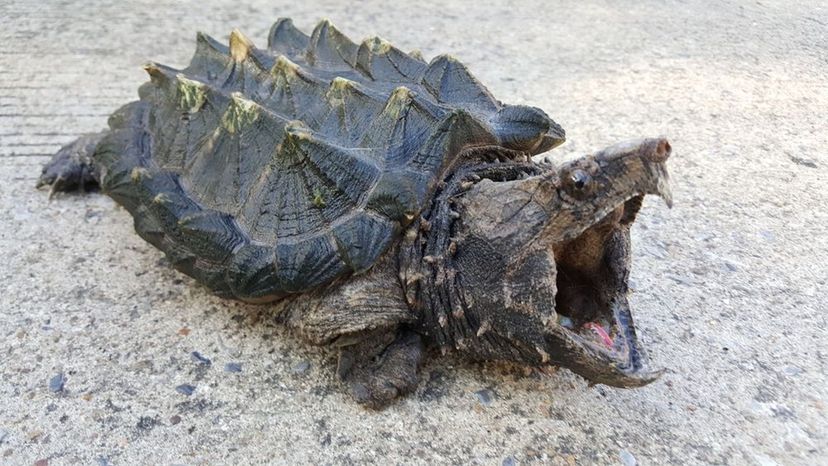
shutterstock
Which reptile is shown in this image?
Alligator Snapping Turtle
The Alligator Snapping Turtle is one of the largest freshwater turtles in the world. They are prey to no animal other than humans, but they are captured by humans to eat and trade as exotic pets. These turtles can live 20 to 70 years.
Gopher Tortoise
Box Turtle
Fea's Viper
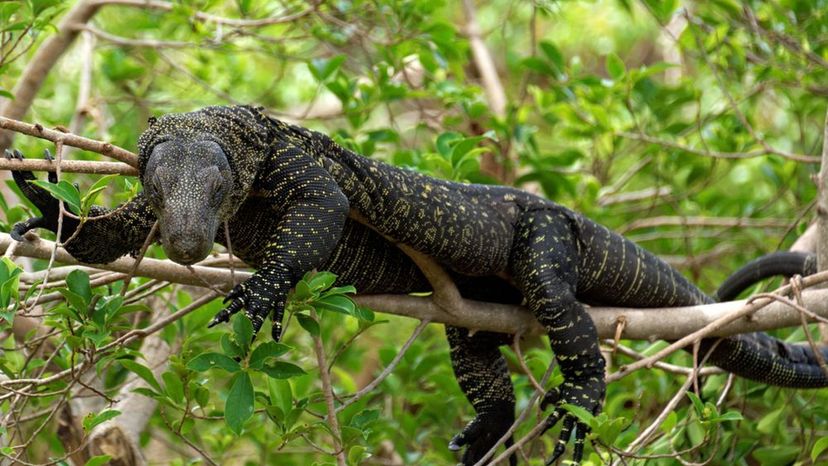
shutterstock
Which reptile is shown in this image?
Crocodile Monitor
This is the longest in the world in the lizard category. It can grow to over 12 feet, with two-thirds of the length coming from its tail.
Scheltopusik
Northern Death Adder
Angolan Dwarf Python
Advertisement
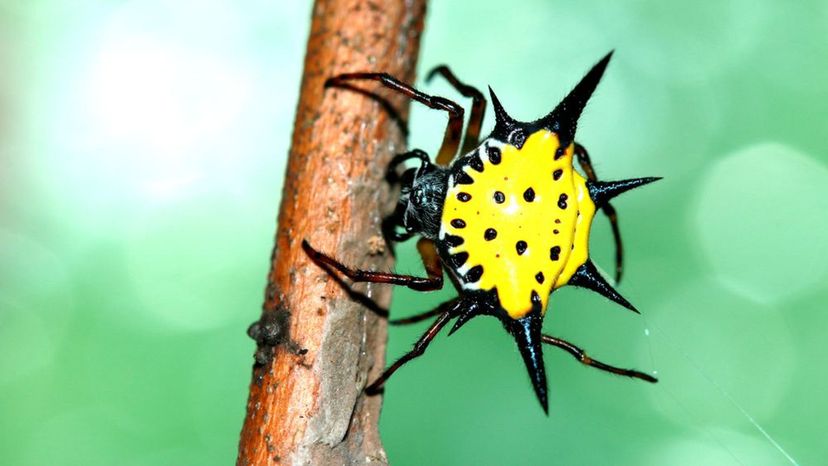
Shutterstock
Which spider is shown in this image?
Bold Jumping Spider
Johnson Jumping Spider
Orb Weaver
Spiny Backed Orb Weaver
If you measure from spike to spike across this spider's back you could get as much as 3 centimeters - that's over an inch. It's only in the case of the females, however, since the males' projections are more like stubby knobs than spikes.
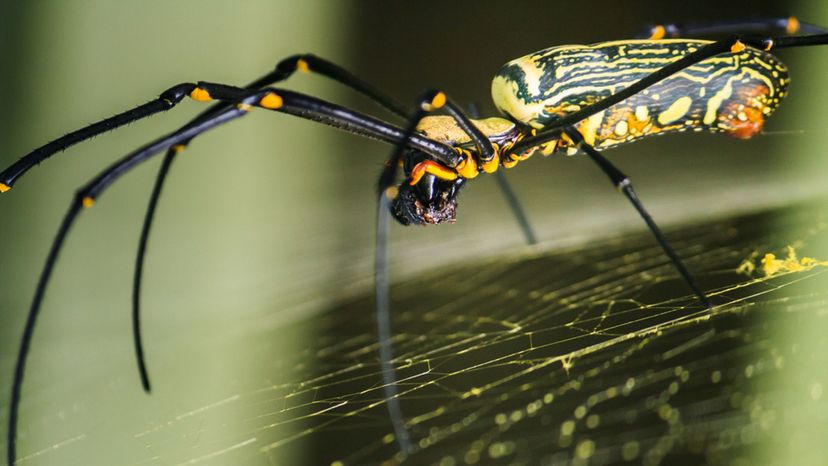
Shutterstock
Which spider is shown in this image?
Desert Tarantula
Golden Orb Weaver
As far as its name goes, it is the web it makes and not the spider itself that has a golden sheen. These large spiders are, in fact, colored silvery-grey to plum with brown-black legs that tend to have yellow bands.
Brown Recluse
Red Folding Trapdoor Spider
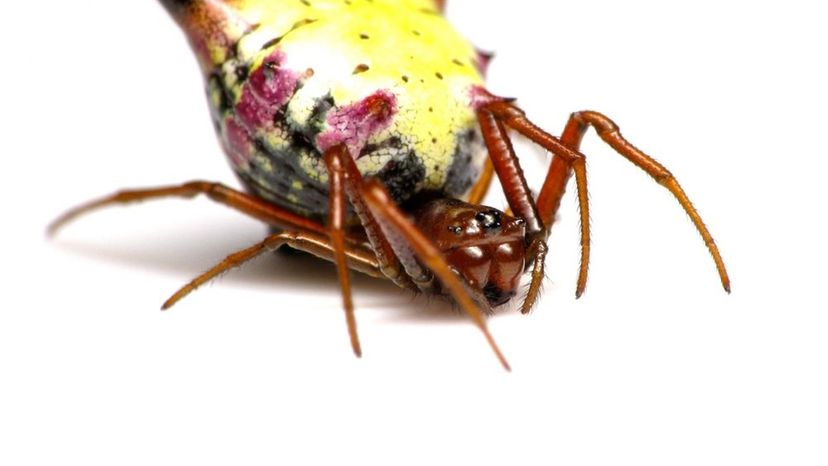
Shutterstock
Which spider is shown in this image?
Eastern Harvestman
Carolina Wolf Spider
Arrow-shaped Micrathena Spider
The characteristic arrow-shaped abdomen which gives this spider its name is only featured in the females of the species. The web of the Arrow-shaped Micrathena Spider also has a characteristic feature - a hole in its center.
Running Crab Spider
Advertisement
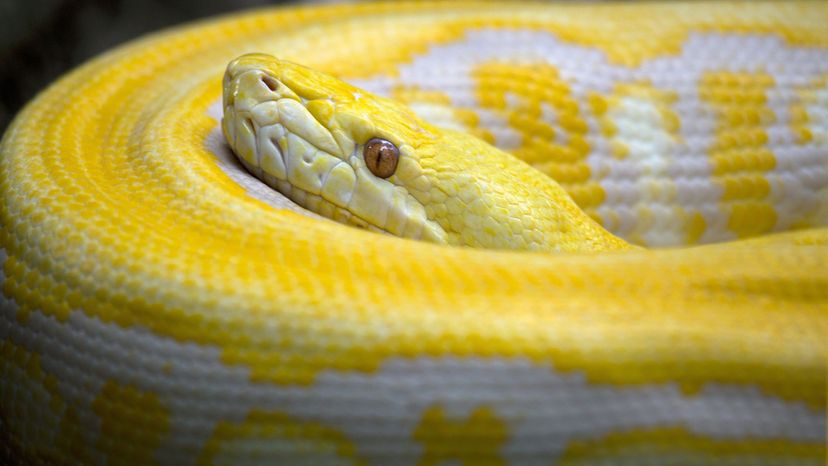
n/a
Which reptile is shown in this image?
Reticulated Python
In March 2017, "USA Today" ran a story with a video of a 25-year-old farmer in Indonesia who did not return from his day's work. A searched turned up no farmer, but a boot, tools, and a really big snake. They cut open this reticulated python to find the intact body of the missing farmer.
Timber Rattlesnake
Northern Death Adder
Savannah Monitor
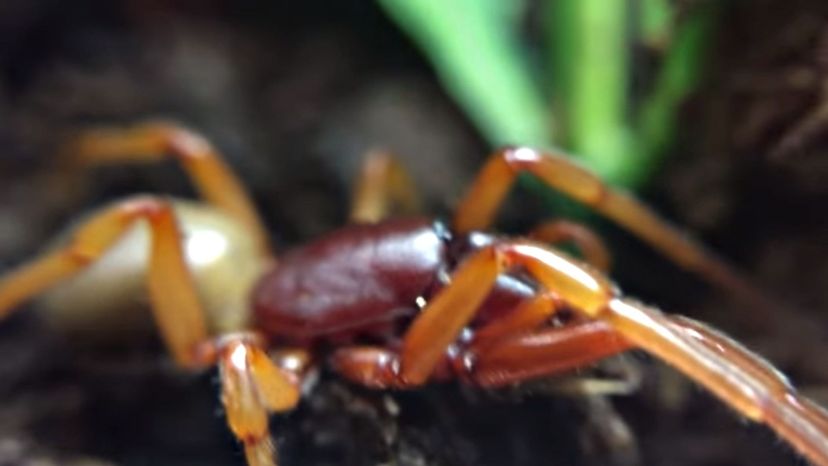
n/a
Which spider is shown in this image?
Sowbug Killer Spider
Sowbugs (aka woodlice) may be tough little pests, but they are no match for the Sowbug Killer Spider which views them as regular prey. These spiders live close to their food source, so you can find them under rocks and logs or in leaf litter.
Spined Micrathena Spider
Parson Spider
Giant Crab Spider
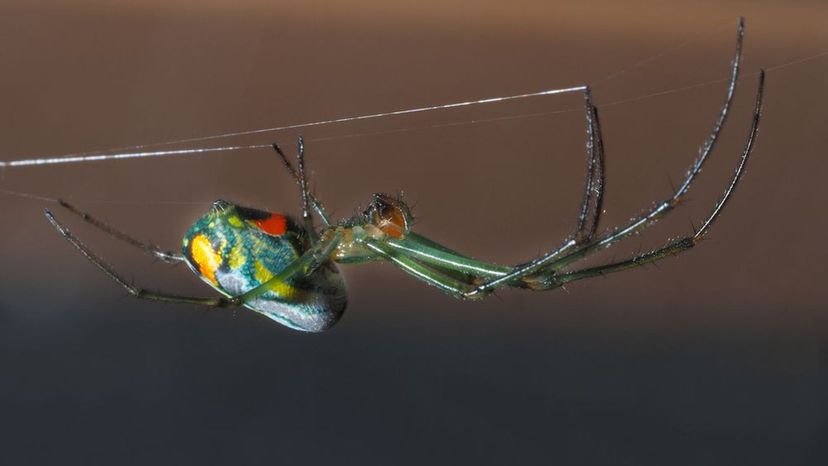
Shutterstock
Which spider is shown in this image?
Fishing Spider
Cat-faced Spider
Venusta Orchard Spider
The painted abdomen of this large spider will vary in color from one spider to the next. Furthermore, while most orb weaver spiders have a more or less spherical abdomen, this species is noted for the oblong shape of its body.
Brown Widow
Advertisement
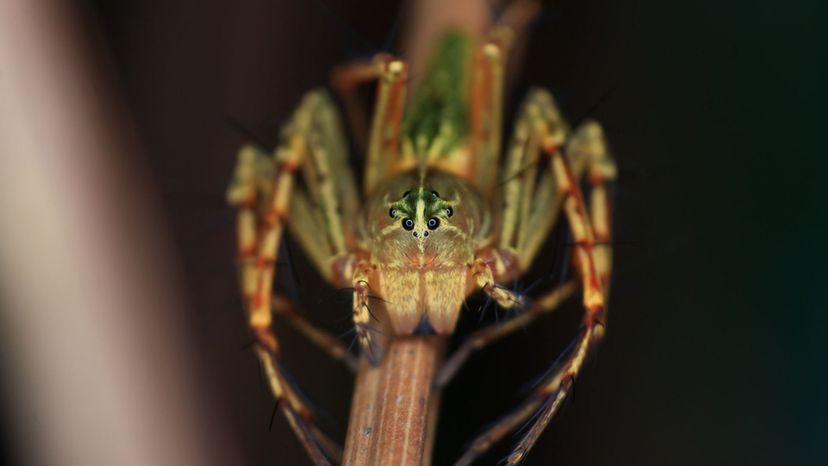
Shutterstock
Which spider is shown in this image?
Southeastern Wandering Spider
The Southeastern Wandering Spider is an active hunter and as such does not spin a web. They are aggressive, venomous, and hunt at night.
Red ant-mimic Spider
Nursery Web Spider
Tan Jumping Spider

Shutterstock
Which spider is shown in this image?
Stealthy Ground Spider
Black and Yellow Garden Spider
Although there are color variations from one spider to the next, this spider is known by the distinctive black and yellow pattern on its abdomen. Also, the females of this species are about four times larger than the males.
Cat-faced Spider
Trashline Orb Weaver
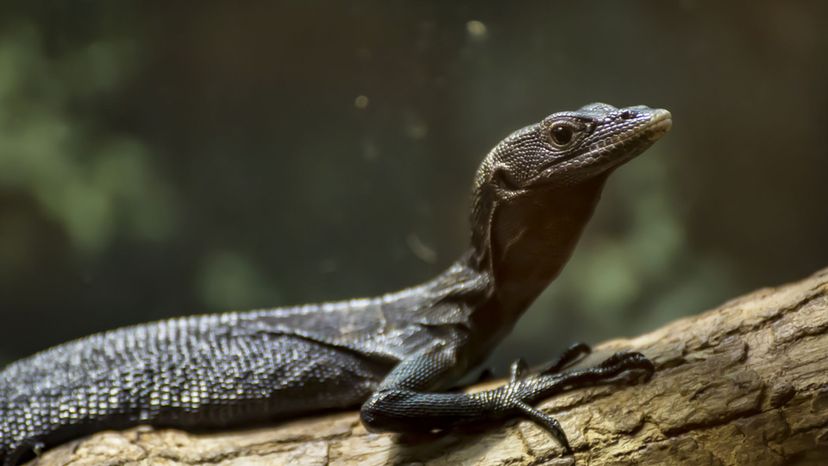
Shutterstock
Which reptile is shown in this image?
Black Tree Monitor
This monitor has longer teeth than other monitors. It resides in New Guinea, in the trees, where its long claws and gripping tail help it to get around.
Blue-Tongued Skink
Western Chuckwalla
Burmese Python
Advertisement
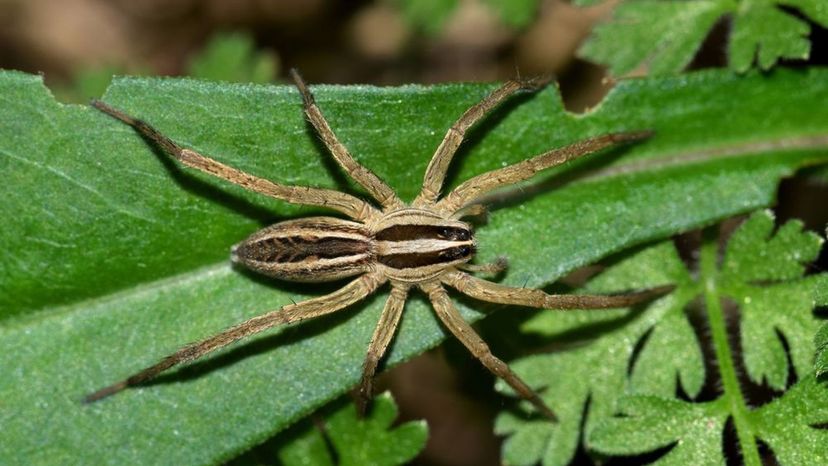
Shutterstock
Which spider is shown in this image?
Cross-spider
Orb Weaver
Wolf Spider
Keen eyesight and the tendency to live and hunt alone are a couple of the characteristics of the Wolf Spider. They are also known to hunt down and pounce on their prey.
Bark Crab Spider
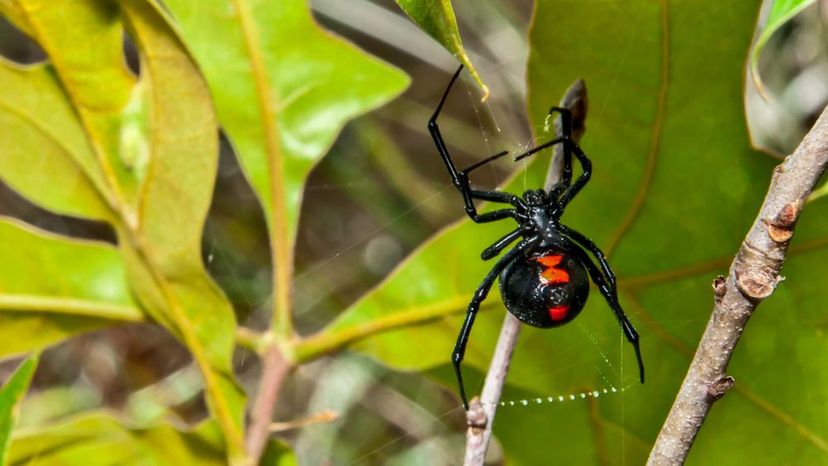
Shutterstock
Which spider is shown in this image?
Mexican Orange-Kneed Tarantula
Hacklemesh Weaver
Marble Orb Weaver
Black Widow
The venom of the Black Widow Spider is said to be up to 15 times as strong as that of a rattlesnake. A healthy adult will most likely not die from being bitten by a Black Widow, however, small children, the elderly, and sick people may not fare so well.
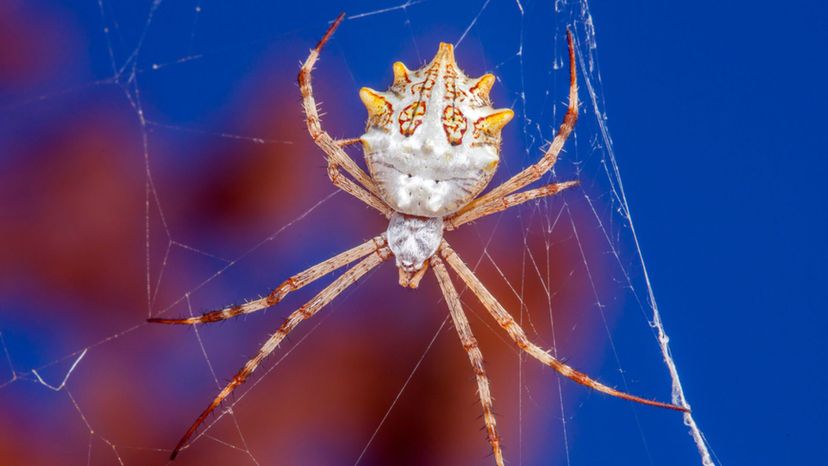
Shutterstock
Which spider is shown in this image?
Nursery Web Spider
Silver Garden Spider
Found throughout warmer regions of the Americas, the Silver Garden Spider can often be distinguished by the zig-zag stabilizing pattern it forms in its web. The female of the species can grow up to 3.5 centimeters long.
Johnson Jumping Spider
Golden Orb Weaver
Advertisement
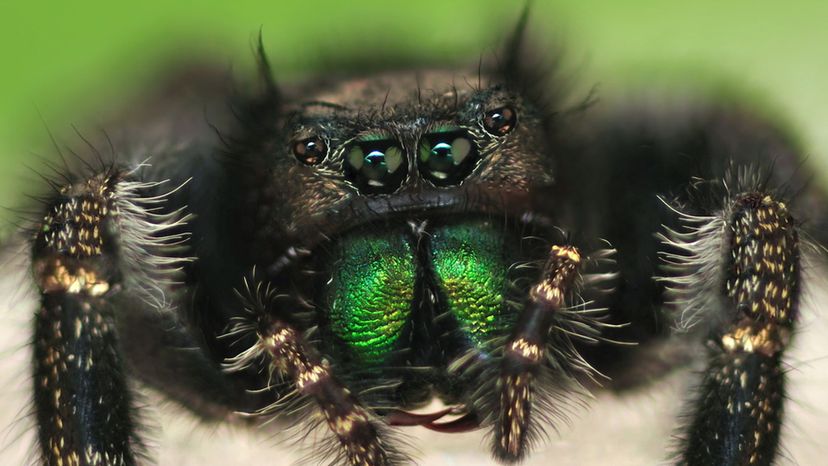
n/a
Which spider is shown in this image?
Bold Jumping Spider
The Bold Jumping Spider is often called the Daring Jumping Spider. Among its distinguishing traits are mouthparts which are an iridescent blue or green.
Arrowhead Orb Weaver
Western Spotted Orb Weaver
Brown Widow
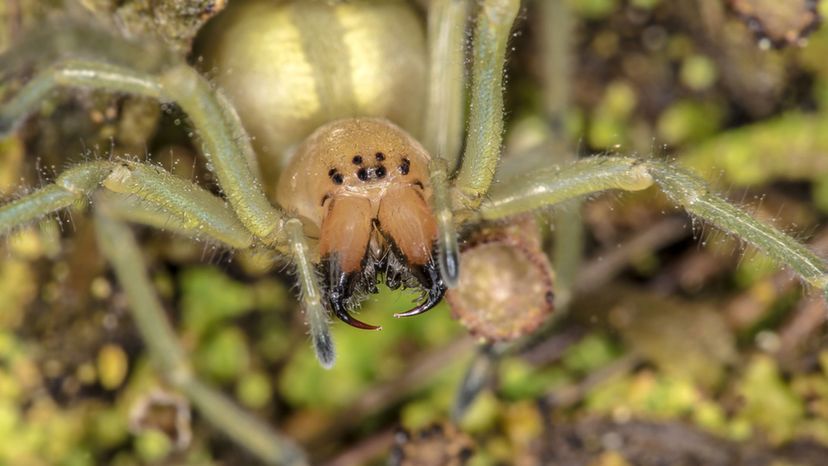
Shutterstock
Which spider is shown in this image?
Arrow-shaped Micrathena Spider
Sac Spider
Sac Spiders have an abdomen that is conical in shape. They can be found in many regions throughout the world.
Carolina Wolf Spider
Curlyhair Tarantula
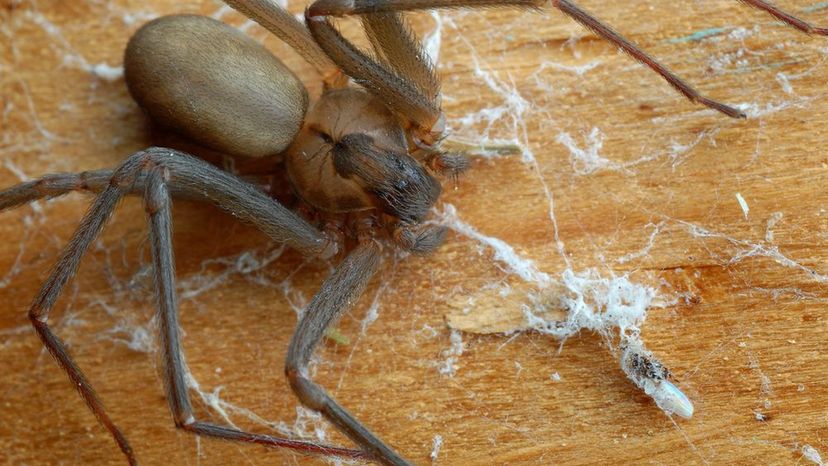
n/a
Which spider is shown in this image?
Brown Recluse
Although called "brown,†their colors can be anywhere from whitish to dark brown to blackish gray. Those bitten by the Brown Recluse Spider may need to seek medical attention to counter the effects of its venom.
California Trapdoor Spider
Spotted Orb Weaver
Venusta Orchard Spider
Advertisement
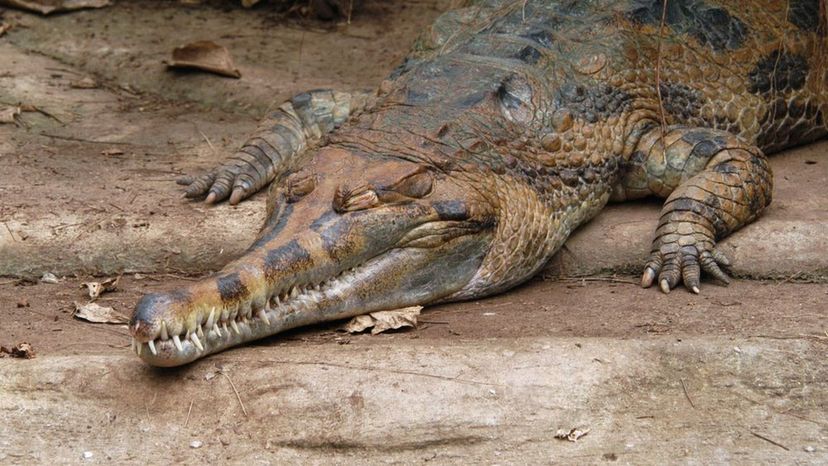
shutterstock
Which reptile is shown in this image?
Malayan Gharial
The Malayan gharial is also known as the false gharial. Fewer than 2,500 of these animals remain in the wild, because their habitat is being destroyed.
New Caledonian Giant Gecko
Ornate Box Turtle
Moorish Viper
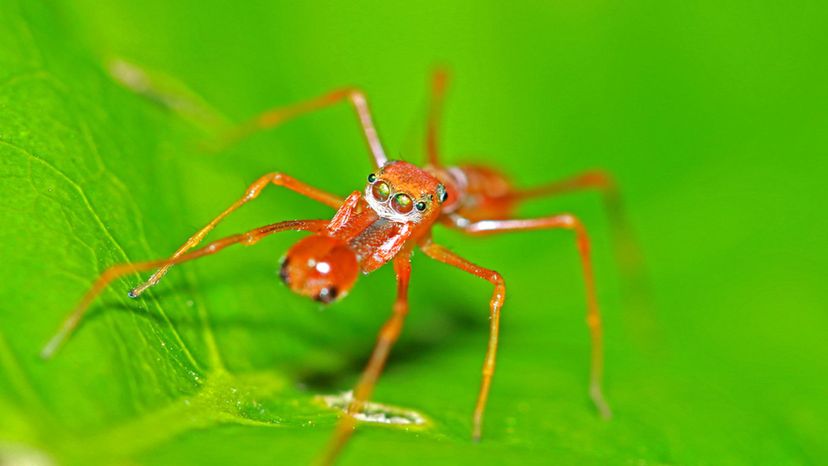
Shutterstock
Which spider is shown in this image?
Red ant-mimic Spider
The Red ant-mimic Spider uses its disguise for a double advantage. It fools would-be predators into thinking it's a red ant and so is often left alone. It also tricks the red ant (its most favored prey) into thinking it's one of them so it can get close enough for a meal.
Long-bodied Cellar Spider
Cat-faced Spider
Triangulate Cob Web Spider

Shutterstock
Which spider is shown in this image?
Shamrock Spider
Despite its name, the Shamrock Spider is not green but rather can be white, yellow, bright red, purple or anything in-between. They do have the number three in common with the clover leaf in their name, however, as they display three stripes on their legs.
Black Widow
Mexican Orange-Kneed Tarantula
Bark Crab Spider
Advertisement
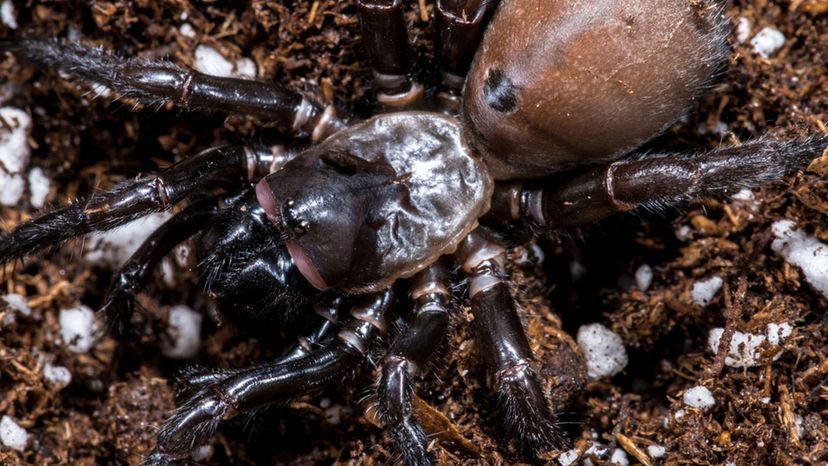
Shutterstock
Which spider is shown in this image?
Woodland Jumping Spider
Banded Garden Spider
California Trapdoor Spider
Except for the fact that its body is shiny and hairless, the California Trapdoor Spider looks pretty much like a small Tarantula. Its burrow is built with a hinged door made of silk so it can spring out and catch its prey.
Arrowhead Orb Weaver
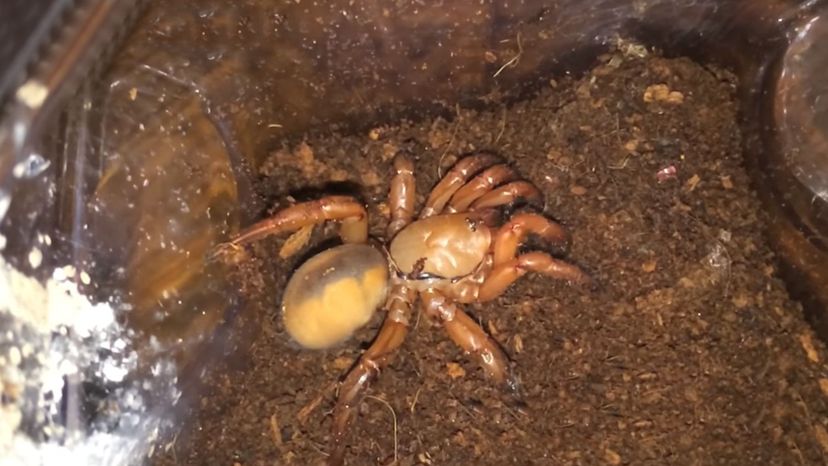
YouTube
Which spider is shown in this image?
Stealthy Ground Spider
Nursery Web Spider
Trashline Orb Weaver
Red Folding Trapdoor Spider
The Red Folding Trapdoor Spider is related to both the Trapdoor Spider family and to Tarantulas. They do not spin webs, but rather live in underground burrows designed with a silk trapdoor from which the spider jumps out to surprise its prey.
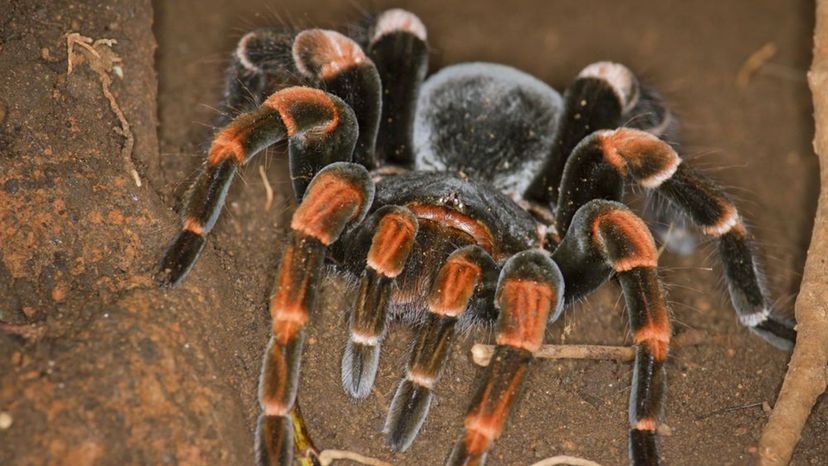
Shutterstock
Which spider is shown in this image?
California Trapdoor Spider
Banded Garden Spider
American House Spider
Mexican Orange-Kneed Tarantula
This very large and very hairy spider is both endangered and protected. The males have longer legs than the females but as is typical of most spider species, they have smaller bodies.
Advertisement
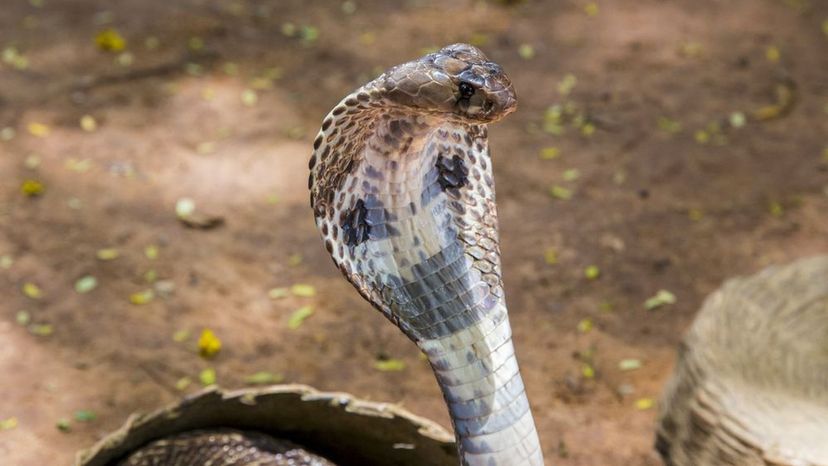
Shutterstock
Which reptile is shown in this image?
King Cobra
Even though their venom is not the most potent of venomous snakes, the quantity they release in one bite is enough to kill 20 humans. King cobras are known for their ability to "stand up" and flare their hoods in defense.
Masssauga Rattlesnake
Black Rat Snake
Burmese Python
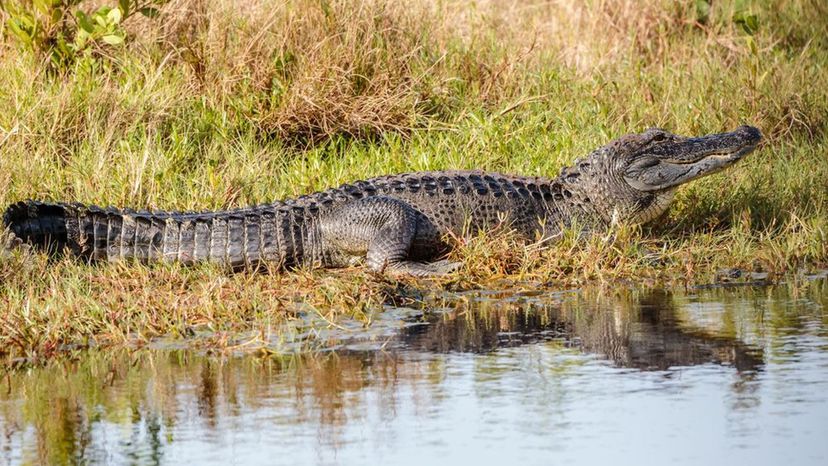
shutterstock
Which reptile is shown in this image?
Anatolian Viper
American Alligator
The American Alligator is a modern day dinosaur. This species is said to be over 150 million years old and survived the extinction of the dinosaurs 65 million years ago. The American Alligator also survived more recent endangerment and is now thriving in the fresh waters of Florida and Louisiana.
Leopard Gecko
Ball Python
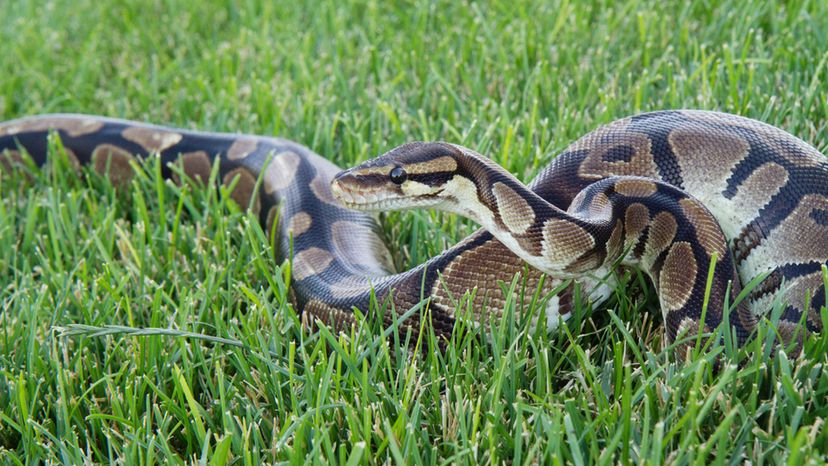
shutterstock
Which reptile is shown in this image?
Timber Rattlesnake
Ball Python
Ball pythons are common pets for snake owners. They get their name from the way they curl up like a ball in order to take their defensive position.
Prairie King Snake
Chinese Crocodile Lizard
Advertisement

shutterstock
Which reptile is shown in this image?
Chinese Crocodile Lizard
Green Iguana
Leopard Gecko
Leopard geckos are a popular reptile pet. They can easily be found in pet stores. They have no odor, can be left alone for several days in a row, and don't make noise.
Malayan Gharial
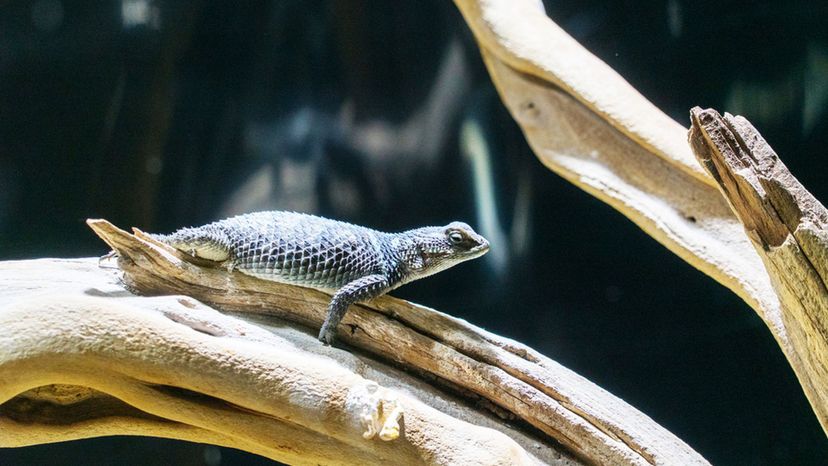
shutterstock
Which reptile is shown in this image?
Malayan Gharial
Blue Spiny Lizard
The Blue Spiny Lizard loves to climb and is most active during the day. It uses its sharp pointed scales to pierce its attacker and defend itself. However, it is not prey for very many other species.
Black-Headed Python
Burmese Python
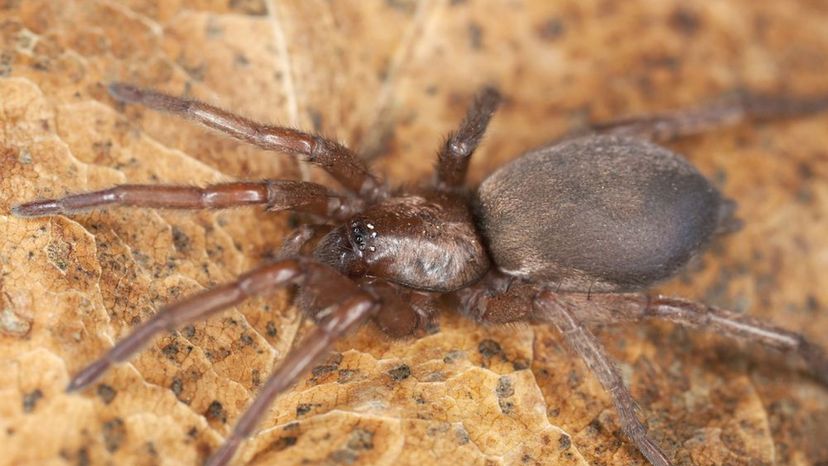
Shutterstock
Which spider is shown in this image?
Spined Micrathena Spider
Eastern Harvestman
Stealthy Ground Spider
These mainly nocturnal spiders are wandering hunters. They do not build webs but tend to live on the ground in leaf litter, among decomposing wood, and under rocks.
Red Folding Trapdoor Spider
Advertisement
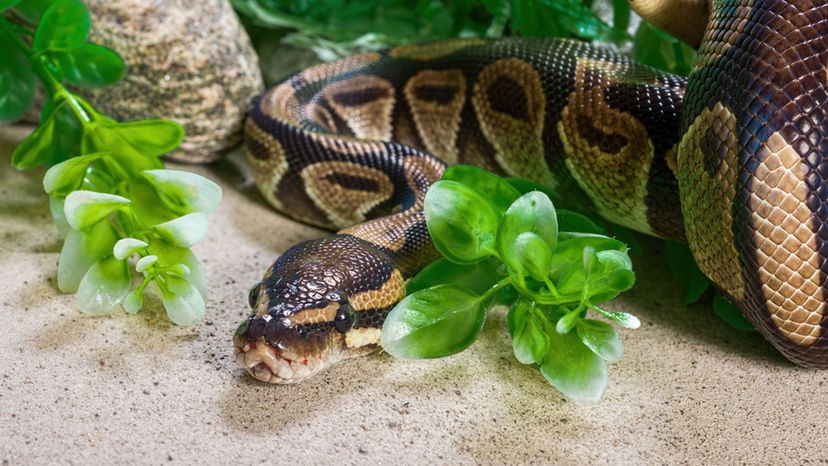
shutterstock
Which reptile is shown in this image?
Burmese Python
The Burmese Python is one of the top five largest snakes in the world. It is a favorite among large reptile owners, however they often turn out to be more work than expected and are often released into the wild.
Grand Canyon Rattlesnake
Green Anaconda
Black-Headed Python
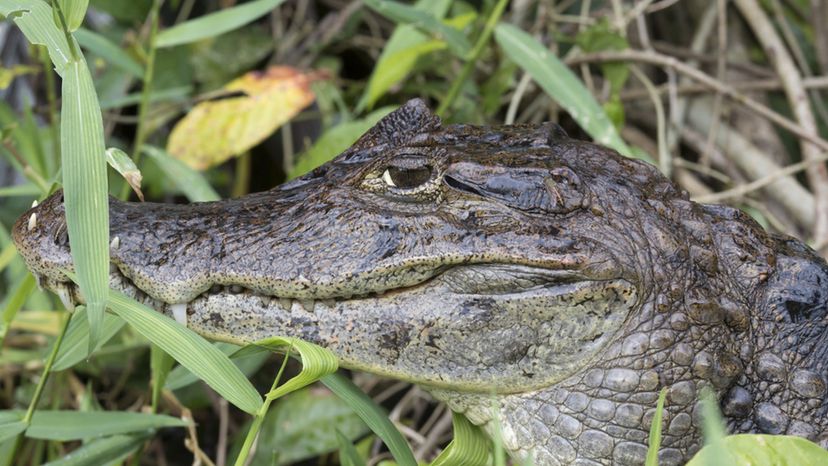
shutterstock
Which reptile is shown in this image?
Malayan Gharial
Warren's Girdled Lizard
Spectacled Caiman
The spectacled caiman is named for the bony ridge on its brow that makes it look like it is wearing spectacles. It is said to be the most variable since it has at least four subspecies, one of them being the Yacare caiman.
Black Tree Monitor
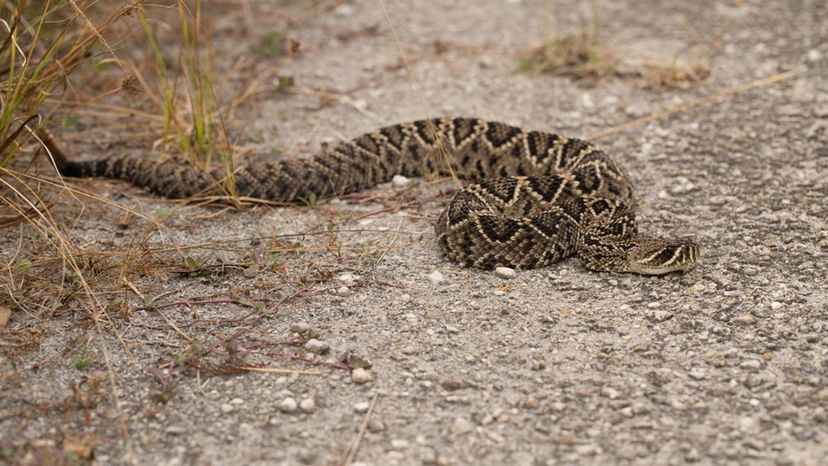
shutterstock
Which reptile is shown in this image?
Burmese Python
Jamaican Boa
Eastern Diamondback Rattlesnake
The eastern diamondback is one of the most venomous snakes and the largest rattlesnake in North America. It is not a girl's best friend, as a bite from this snake is painful and its venom kills red blood cells. However, death is rarely a result, as antivenin is widely available.
Blue-Tongued Skink
Advertisement
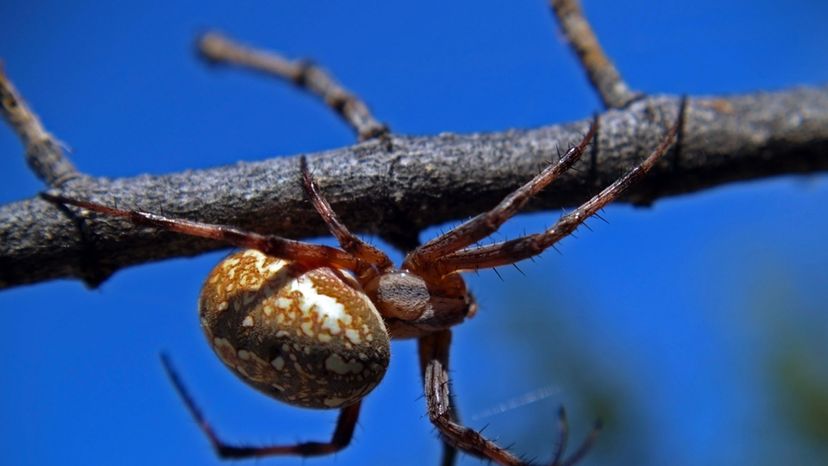
Shutterstock
Which spider is shown in this image?
American House Spider
Brown Recluse
Western Spotted Orb Weaver
This spider is easily identified by the bold pattern on its abdomen. The Western Spotted Orb Weaver's circular web is often located out in the open away from foliage.
Green Crab Spider
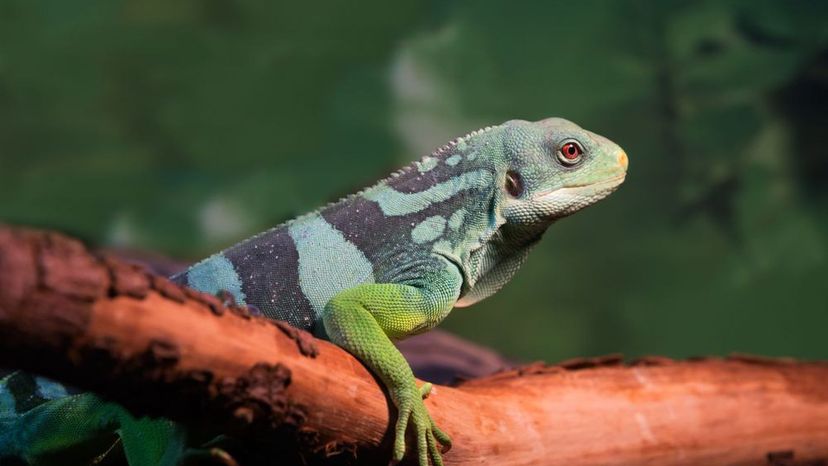
shutterstock
Which reptile is shown in this image?
Fiji Banded Iguana
You will not find this species in the Americas. Though it is brightly colored, especially the males, it can change color to hide in its surroundings. When an enemy approaches, it will turn black, hopefully a warning to stay away.
Angolan Dwarf Python
Bolkar Viper
Timber Rattlesnake
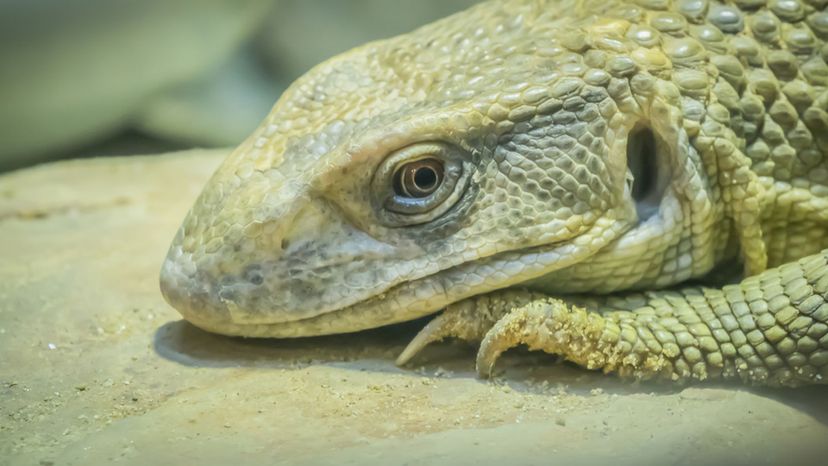
shutterstock
Which reptile is shown in this image?
Scheltopusik
Savannah Monitor
Savannah Monitors are native to Africa. When they were imported to the U.S., they had a tough time surviving due to the change in environment. Sometimes these animals are kept as pets.
Mt. Mang Pitviper
Warren's Girdled Lizard
Advertisement
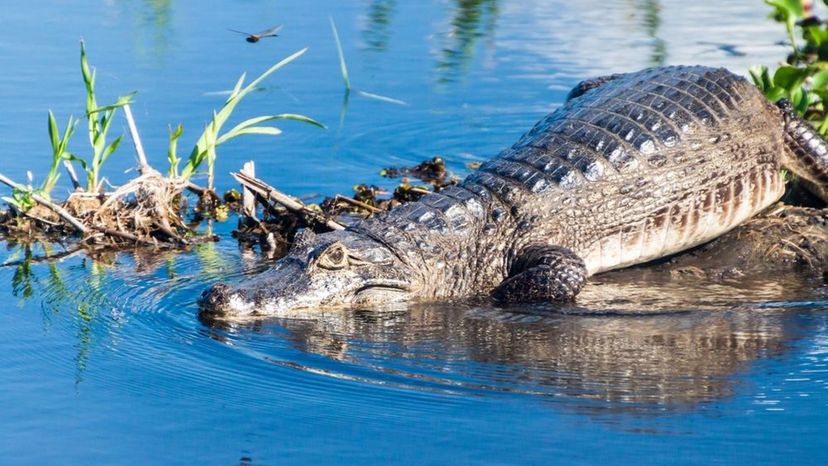
shutterstock
Which reptile is shown in this image?
Warren's Girdled Lizard
Yacare Caiman
The common name for the Yacare is the Piranha Caiman. This is because of its large teeth, which are visible even when its mouth is closed. Oh, and it also eats piranha.
Arakan Forest Turtle
Scheltopusik
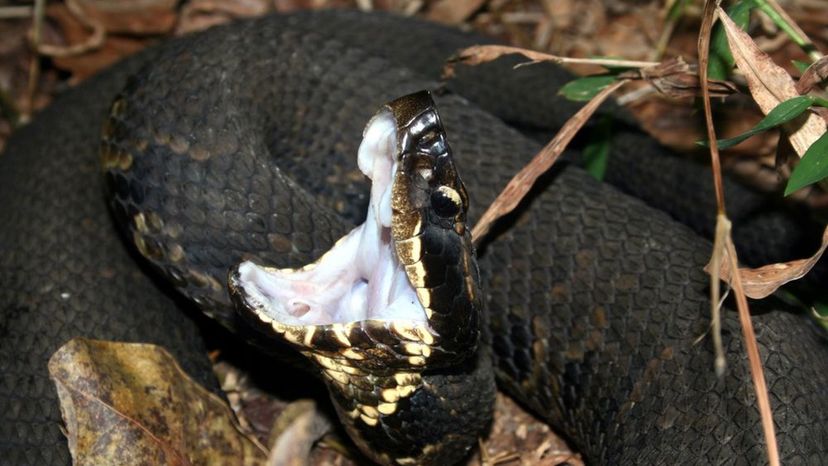
shutterstock
Which reptile is shown in this image?
Western Cottonmouth
This water moccasin can be found in Texas. It flattens its body when threatened and opens its mouth wide, displaying a cotton white inside.
Ridge-nosed Rattlesnake
West African Gaboon Viper
King Cobra

shutterstock
Which reptile is shown in this image?
King Cobra
Green Anaconda
Even though the reticulated python claims the "longest snake" title, the green anaconda has such a girth that it is the largest. These snakes mate in groups with one female in the middle and the males fighting for a turn. The female will mate multiple times and sometimes will eat her mate when finished.
Sawu Python
Banded Gila Monster
Advertisement
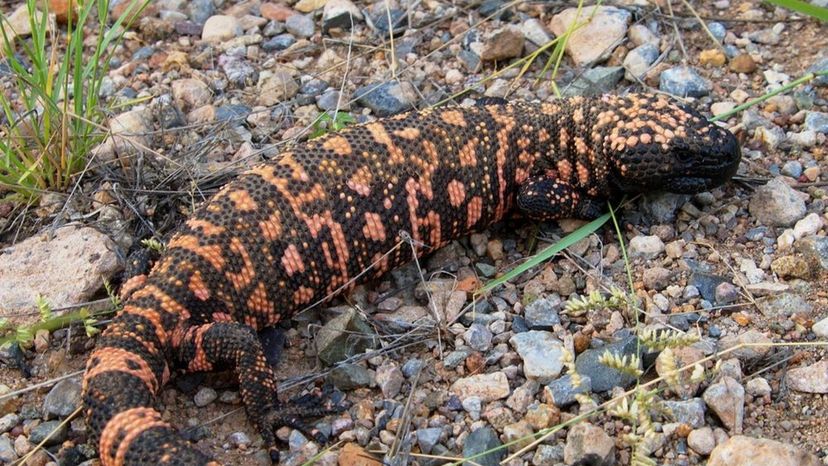
shutterstock
Which reptile is shown in this image?
Sawu Python
Banded Gila Monster
The Banded Gila Monster is one of the very few venomous lizards of the world. It poisons its target by chewing on it and allowing the poison to flow through the grooves in its teeth and into the flesh wounds.
American Alligator
Mexican Beaded Lizard
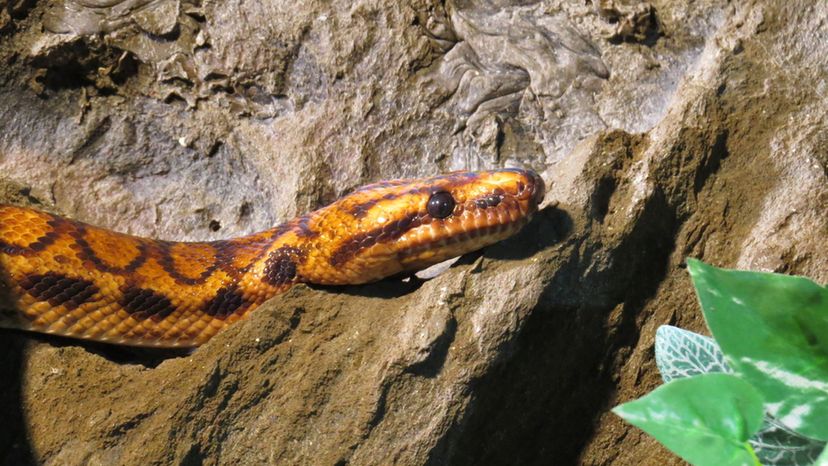
shutterstock
Which reptile is shown in this image?
Central Asian Cobra
Brazilian Rainbow Boa
These boas can live to be 20 years old. They are non-venemous -- they constrict their prey.
Moorish Viper
New Caledonian Giant Gecko
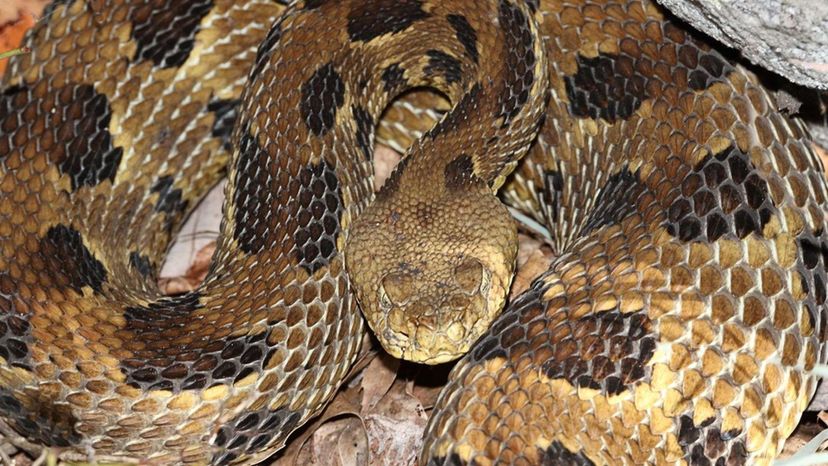
Shutterstock
Which reptile is shown in this image?
Timber Rattlesnake
The timber rattlesnake is also known as the canebrake rattlesnake or the banded rattlesnake. It is the third largest venomous snake in the U.S.
Yangtze Mamushi
Moorish Viper
New Guinea Crocodile Skink
Advertisement
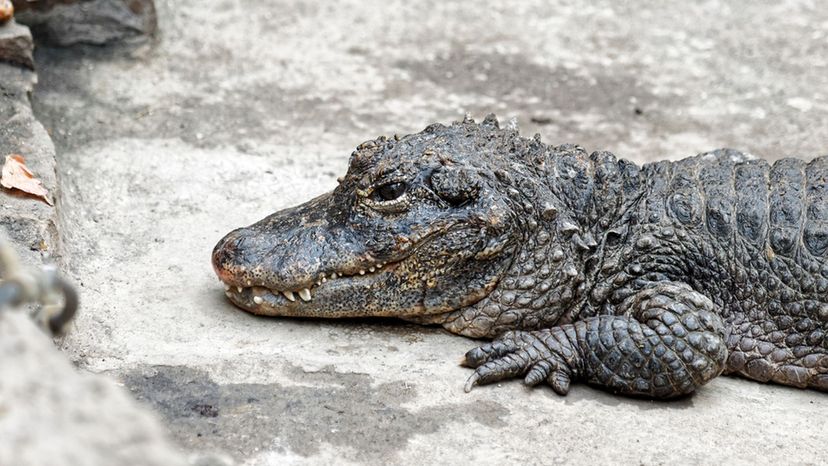
shutterstock
Which reptile is shown in this image?
New Guinea Crocodile Skink
Malayan Gharial
Chinese Alligator
The Chinese Alligator's snout is slightly more upturned and tapered than that of its counterpart, the American Alligator. It is also one of the most endangered and smallest of the crocodilian family.
Moorish Viper
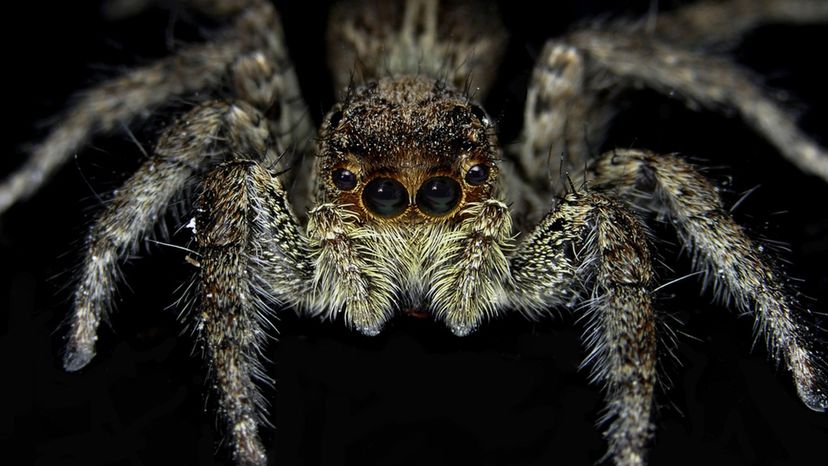
Shutterstock
Which spider is shown in this image?
Long-bodied Cellar Spider
Giant Crab Spider
Tan Jumping Spider
Like most other jumping spiders, Tan Jumping Spiders have great eyesight. They can be found is several areas throughout North and Central America
Southeastern Wandering Spider
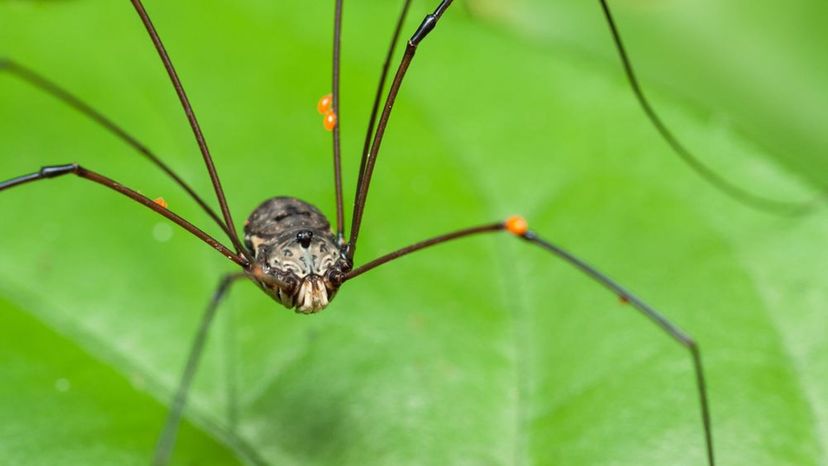
Shutterstock
Which spider is shown in this image?
Daddy Long Legs
While the true Daddy Long Legs is not a spider, there is a species of spiders that is referred to as Daddy Long Legs. While real Daddy Long Legs have 8 legs like a spider, they only have two eyes instead of the eight that spiders typically have.
Parson Spider
Triangulate Cob Web Spider
California Trapdoor Spider
Advertisement
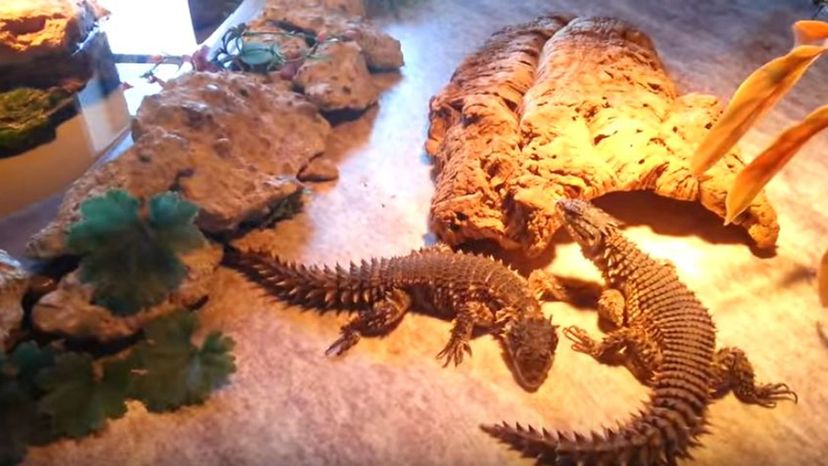
youtube
Which reptile is shown in this image?
Solomon Island Prehensile-Tailed Skink
Warren's Girdled Lizard
These lizards are quite shy and hide in the rocks in the mountains. They are very observant of their surroundings and cautious when they move. Females have a gestation period of about seven months, then give birth to up to six live offspring.
Black Tree Monitor
Malayan Gharial
You Got:
/50
Shutterstock
